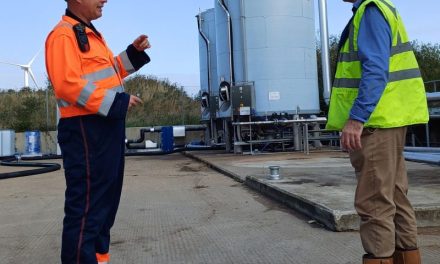 With the WEEE Directive constantly evolving, it is highly likely that recycling targets will only become more strict in the future. Here, Ernest Magog of Lumicom provides some guidance on how to plan for the tougher times ahead
With the WEEE Directive constantly evolving, it is highly likely that recycling targets will only become more strict in the future. Here, Ernest Magog of Lumicom provides some guidance on how to plan for the tougher times ahead
You can be sure that just when a piece of legislation is starting to make sense, someone will come along and change it. This is certainly the case with the Waste Electrical and Electronic Equipment (WEEE) Directive, which continues to evolve. In this case though, there are very good reasons for changes, as each generation of the directive serves to increase recycling levels and reduce the volume of waste sent to landfill.
Nevertheless, compliance with the WEEE Directive can present some challenges for those who are required to manage it. The purpose of this article is to explain the key changes that are in the pipeline, and to provide some guidance on how to make compliance easier to manage.
What’s changing
From 2018 the scope of the regulations will change to what is known as ‘open scope’. This means that instead of listing all of the equipment that falls within the scope of the directive, it will list the equipment that is not in scope in its annexes. Inevitably this will bring a great deal of equipment into scope that is not currently included – such as switch gear, internally illuminated signs and photovoltaic panels. For this reason, when specifying equipment that has a long life and is likely to last beyond 2018, it would be advisable to stipulate that such equipment is recyclable when preparing invitations to tender.
Another change that will be happening even sooner is a four-fold increase in the national recycling target from 2016. This means that if your company has achieved a good level of recycling to date, based on today’s standards, it won’t be long before it needs to work much harder to maintain those standards against a more demanding national benchmark.
When a plan comes together!
Given that 2016 will be on us before we know it, it makes sense to start planning now, so that measures can be introduced gradually to increase recycling levels. Again, one obvious measure is to ensure that any equipment you buy is recyclable by making that part of the company’s procurement policy. Of course, this isn’t something that can be applied to all products but there is a lot of scope to increase recycling through this simple expedient.
Also, when purchasing electrical and electronic equipment you should always check the supplier’s terms and conditions very carefully. It is not unheard of for suppliers to try to pass on the responsibility for recycling to the customer, trying to hide this clause in thousands of words of small print.
If the equipment comes in the form of a system, such as a fire safety system or lighting system, it is generally best from a recycling point of view to buy the complete system from one manufacturer and thereby simplify the recycling responsibility. Where this is not possible or practical, try to ensure that the manufacturers supplying different elements of the system all belong to the same WEEE compliance scheme. This way, you need only talk to one body about recycling when the equipment gets to the end of its life – rather than having to deal with multiple bodies, each with its own systems and paperwork.
Consequently, there are benefits to checking each supplier’s WEEE compliance status and ensure they belong to a compliance scheme that has a fully functioning disposal infrastructure.
In parallel, it is important to ensure that your recyclable equipment can be recycled easily at the end of its life. Having the potential to be recycled is just the first step – the practicalities of recycling it also have to be considered if that potential is to be fulfiled. This is where the compliance scheme’s infrastructure plays a vital role in ensuring that maximum recycling levels are achieved. For example, Lumicom is a not for profit compliance scheme that specialises in lighting and is responsible for the recycling of over 97.5% of all of the luminaires going through approved recycling systems in the UK.
Summary
While changes to regulations can be a nuisance there is often a good reason for those changes. In the case of the WEEE Directive, it has ensured that many thousands of tonnes of materials have been recycled rather than being left to rot in landfill sites. Future versions of the WEEE Directive will do even more to protect the environment – something that nobody can object to. The key is to ensure that your own procedures and procurement policies are geared up for making compliance as easy as possible.





